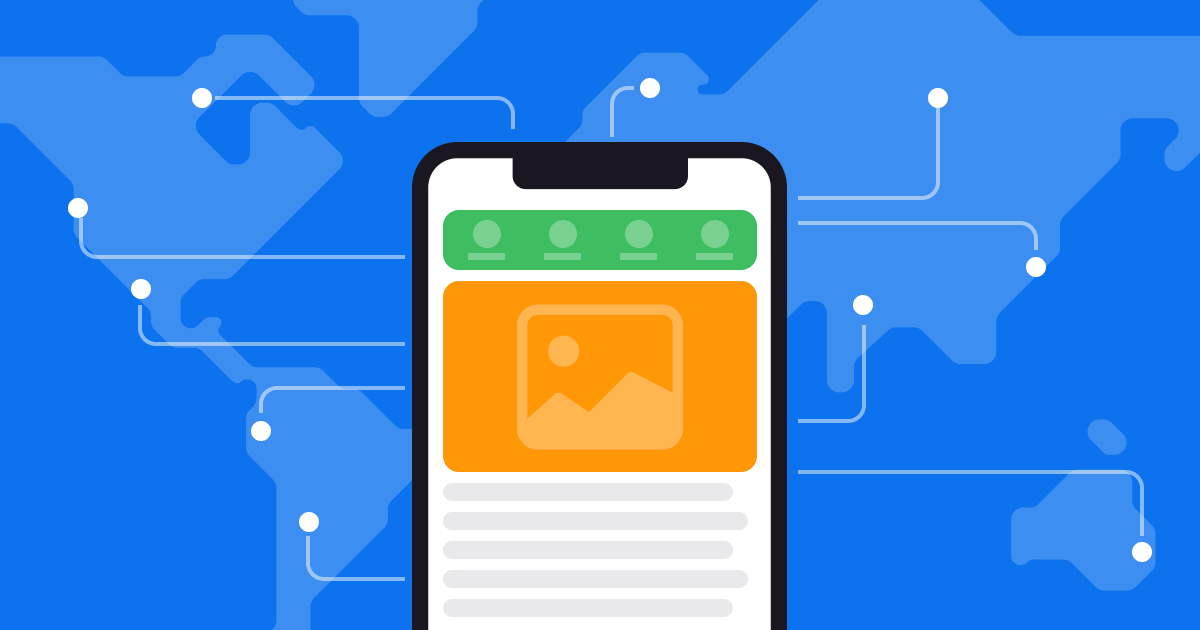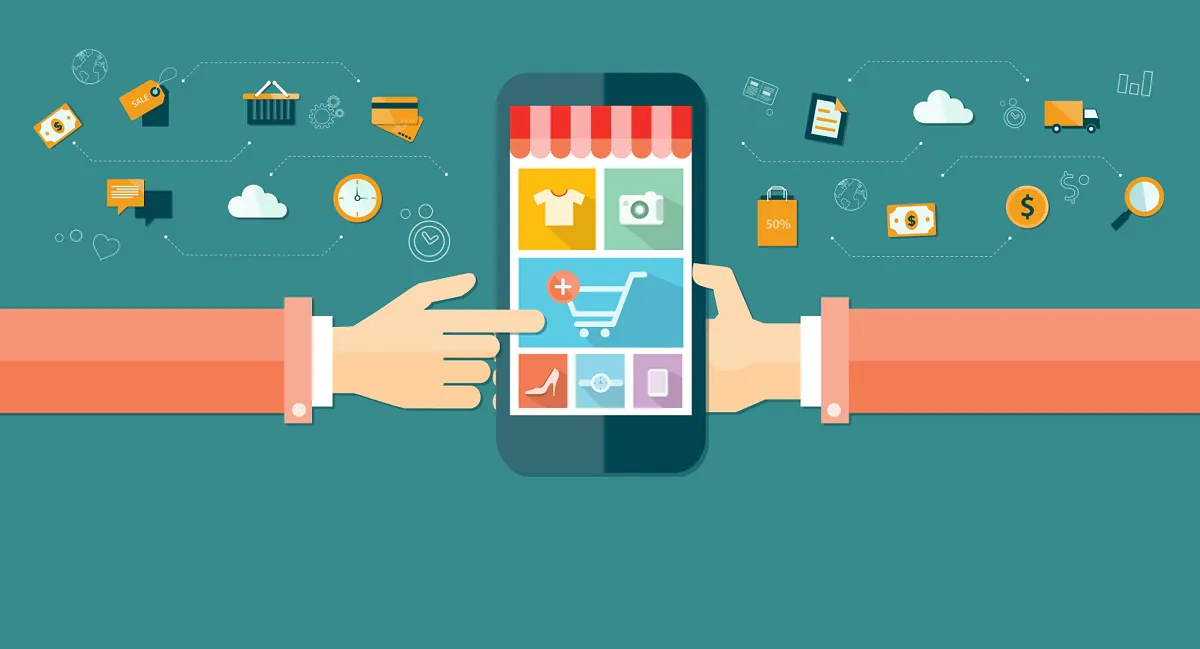How to increase online sales with a mobile app
Table of contents
Selling on the internet usually starts with creating a web version of an online store. But sooner or later, the realisation sets in that the site’s capabilities are not sufficient for a mobile audience that shops from a smartphone, makes decisions in seconds, and wants the fastest and most responsive service possible – a kind of “shop in your pocket”. Even if the site has an adaptive design or a fully mobile version, smartphone users experience discouraging inconveniences. Let’s look at some examples of situations where a store loses customers due to website shortcomings.
Situation one – the user has visited the online store site once and forgotten about it. Even if the site has great products and great prices, it is easy to get lost in the hundreds of other tabs and the company is unlikely to get a loyal customer. To get back in, you have to remember the name of the store, google it or type in the URL – too much action for the ‘lazy’ mobile user.
Situation two – the online store site opens by default on a mobile device in an uncomfortable browser. The user feels uncomfortable and is less likely to buy from the site. The company risks losing a potential customer.
The third situation is when the user enters the online store from another browser that doesn’t store the authorisation data. No access to personal account, order history, favourites, shopping basket. You have to remember your password and login or restore it – it’s long and boring. A person who could have been a potential customer closes the site and goes to a competitor.
The fourth option – the browser has an anti-spam pop-up blocker, so the shop can’t send you reminders, special offers, promotions or forgotten items in your shopping basket. The connection with the shopper is lost and you have to search for him/her again.
The fifth situation, and the saddest, is that the mobile version has reduced functionality and some options are only available on the full version of the site. This annoys users and robs the store of a significant percentage of potential customers.
All these problems are solved by the mobile application for the online shop.
Why an online store app is better than a mobile version of the site
- The loading speed is on average 8 times faster than the website. There are no more bounces due to the slow operation of the shop.
- The application icon is always in view – on the smartphone’s desktop. The user does not need to bookmark, remember the URL or google to return to the store.
- The credentials are stored. One touch and the customer can enter the app and make a purchase.
- The application is personalised. “Shop in your smartphone” adapts fully to the needs and interests of the shopper. The user receives personalised offers, accumulates rewards and saves personal selections.
- More repeat purchases. Statistics show that 35-50% of users return to the app to make a purchase. This is many times higher than for websites.
- Advertising is more effective. The goal of advertising and promoting an app is not just clicks, but installation on a smartphone. Once a user has downloaded an app from the App Store or Play Market, it’s much more than “go in, look around and close the page”.

Follow these 5 steps and sales growth is guaranteed
Step 1 – Decide to create an app for your online store
This step alone is a huge contribution to your business. Your customers’ smartphones will have an app icon and they will be able to enter the store with one touch. The app stores authorisation and payment details, purchase history, shopping basket items and accumulated rewards, motivating them to come back again and again.
Step 2 – Give the customer a quality mobile service
- Ongoing development of the online shop application.
- Ensure a user-friendly interface, quality usability, simplicity and accessibility of functionality.
- Monitor the relevance of the product range and, if necessary, set up the integration of the application with the existing website, 1C, CRM or other software.
- Look for quality content – images, text descriptions, feature tables.
- Use variation goods for the same items with different parameters.
- Connect payment services for fast and secure online payments.
- Implement a delivery status tracking tool.
- Stay connected, provide quality customer service and work with feedback in the app.
- Motivate and reward loyal customers, make the app their main assistant when purchasing your product group.
Step 3 – Launch a loyalty programme
Users are eager to return to the online store when they can pay for part of their purchases with accumulated rewards. The programme works as follows: each user has a bonus account to which a percentage of each purchase is credited. Any other bonus principle can be implemented – for example, bonuses for reviews, unboxing videos or purchasing individual items. The next time the customer places an order, they can spend the rewards according to the terms of the loyalty programme – for example, to pay for up to 30-50% of the purchase. This approach encourages the customer to stay with you longer, resulting in more sales.

Step 4 – Set up push notifications
How does a mobile app turn one-time customers into repeat customers? By gently reminding them with a simple tool: push notifications. What you can notify the user about to increase sales:
- Promotions and discounts;
- personalised offers;
- Accumulated bonuses;
- Goods that may be of interest;
- Information on new collections;
- Items left in your basket;
- Items are “back in stock”;
- Temporary promotions;
- Information about the raffles;
- birthday gifts.
Special offers are a win-win situation: it’s a rewarding shopping experience for the customer, and a win-win situation for the store in terms of building a loyal customer base.
Step 5 – promote the app
There are many effective ways to Promote mobile applications. These are contextual and targeted advertising, SMM, in-store ASO optimisation. It is possible to use QR codes on websites or in physical stores for promotion, create a landing page to present the application, order advertising from bloggers. There are many variants, but the main thing is that the result of the promotion is the installation of the application on the user’s smartphone.
These tips also work for selling services. The step-by-step algorithm can be implemented in mobile apps for restaurants, hotels, beauty salons, dry cleaners and other businesses that sell services.
If you have an online store or are planning to launch one, think about creating a mobile app for sales. The benefits are obvious and the investment will quickly pay for itself through increased sales and customer loyalty. And we are happy to take care of the quality implementation of your project.

